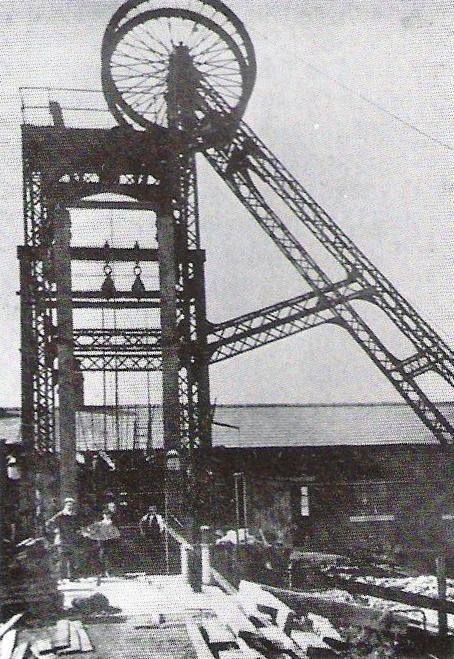
Calder Colliery – downcast shaft
From BM58 Coal Mines of East Lancashire
This pit was the last undertaking by George Hargreaves Collieries, the owners of pits in the Accrington and Baxenden areas. It was situated beside the A678 Padiham to Clayton-le-Moors road, just beyond the bridge over the River Calder.
Shaft sinking began in December 1902, but, owing to problems when water-bearing strata was encountered, work was not completed until 1908.
An accident killed four shaft workers during the final year of shaft sinking, when the bucket (or hoppet) lowering them down the shaft caught the side and over turned. The men fell 345 yards to the bottom.
“First hour, Calder (sinking) George Hargreaves & Co, John Crags,63, bricklayer, Henry Busha/1, 58, bricklayer, Patrick Burns, 46, bricklayer, Herbert Todd, 30, bricklayer. Descending the shaft in a small tub attached to rope by two chains only. The engineman in lowering, went farther than he ought to have done before retarding, applied the break so as to set up oscillation, the tub being attached only by two hooks tilted. The tub collided with a beam with such force as to leave a deep cut impression on a wood beam, and all the men were thrown out.” Mines Inspector’s Report 1st February 1908
The Lower Mountain Mine, which was 2 feet 8 inches thick, was mined using longwall cutters and conveyor belts. The double-decked cages used for winding coal were later replaced by skips. The workings linked with those of Huncoat and Moorfield pits and an aerial rope-way took coal to coke ovens at Huncoat until the late 1920s.
The colliery was nationalised in 1947, but by 1958 the colliery had become uneconomic, and closed in July of that year. The majority of the miners transferred to Huncoat and Hapton Valley collieries, as well as other local pits. Most of the pithead buildings were demolished in 1968/69.
Further reading:
- Nadin, J. 1997 The Coal Mines of East-Lancashire (British Mining No.58, NMRS)

